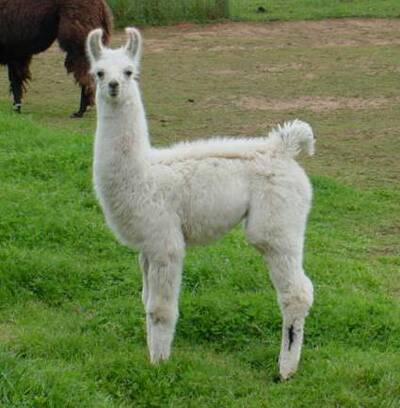Like its cousin the alpaca, the Llama (pronounced "yama") is a member of the camelid family. The Llama family consists of four branches: Alpacas, Guanacos, Llamas and Vicuñas. Alpacas and Llamas have been domesticated for approximately 4,000 years, whereas Guanacos and Vicuñas are mostly found in herds in the wild.
Fossil footprints found in California indicate that Llamas originated in North America. The original camelids that started out there and moved north across the Bering land bridge evolved into camels while the ones that migrated to the south became the Llama family. Most Llamas are now native to Bolivia, Chile, and Peru.
Adult Llamas typically weight between 300 and 450 pounds and stand about five to six feet tall at the head. The newborn, called Cria, range from 25 to 35 pounds and stand about 30 inches tall, reaching their full growth around three to four years of age.
Used for centuries as pack animals by the Incas, it's becoming more and more common now in North America to see Llamas used by hikers for the same purpose. They can easily carry eighty to a hundred pounds and can travel up to twenty miles a day.
Beyond their usefulness as a pack animal however, it's the Llama's silky soft fiber that has made them an increasingly common herd animal here in the States.
Llama fiber is hollow and therefore has great insulating properties which make it a perfect choice for winter clothing. It spins up handsomely into yarn and is easy to work with because it has no lanolin or grease. Ranging from a deep lustrous black to a creamy white with a full range of browns, Llama fibers evolve beautifully into Pussy Caps.
